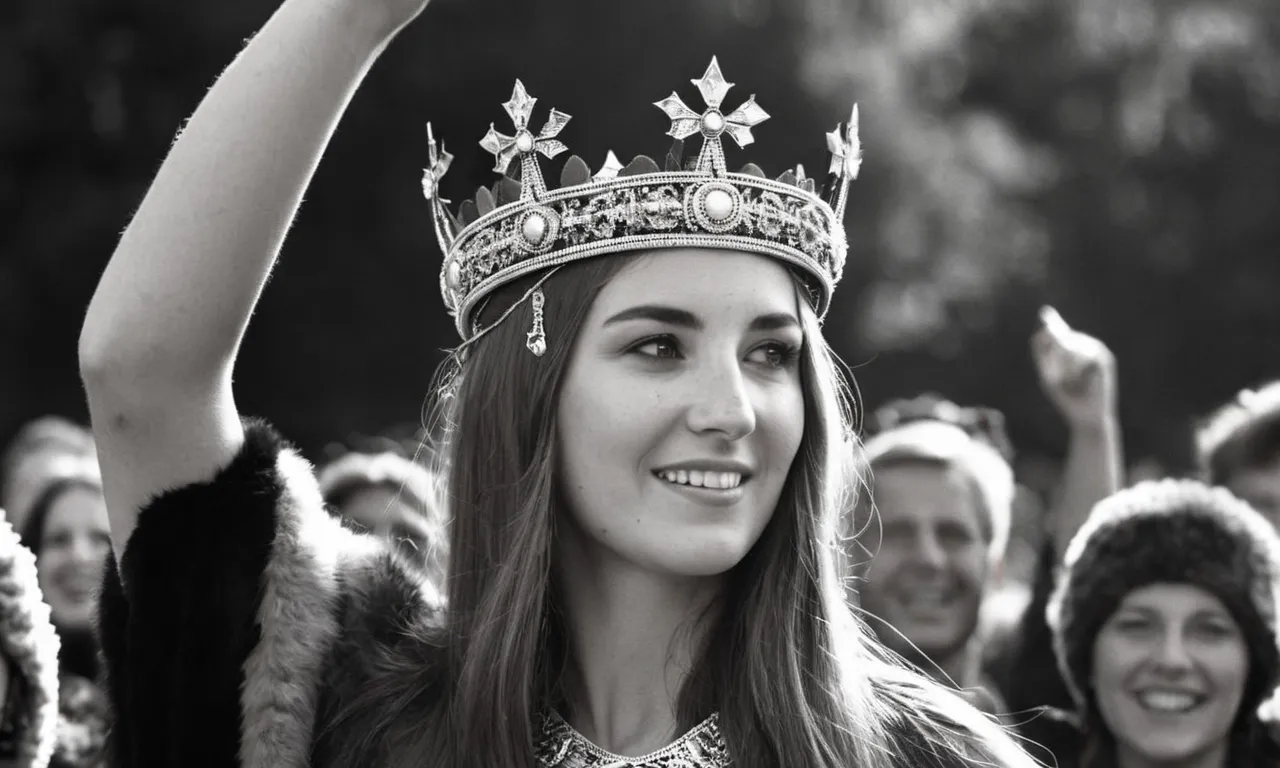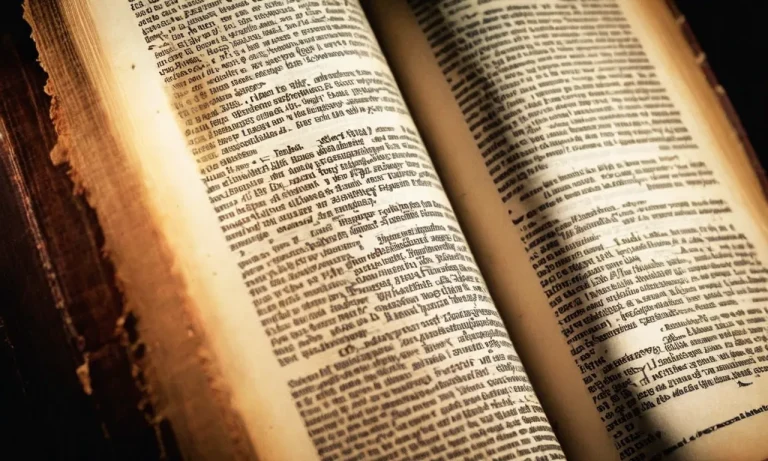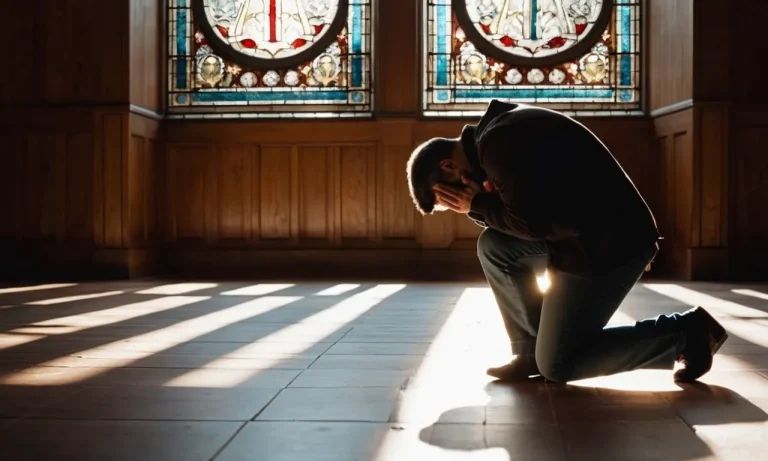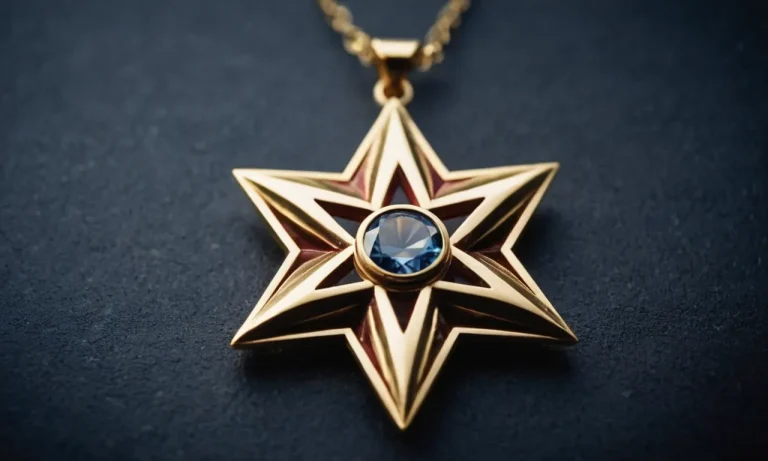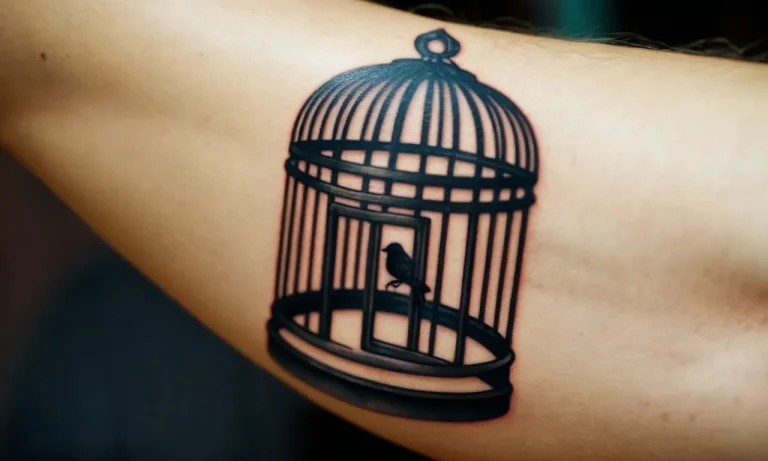Crown Of Laurels Meaning: Exploring The Symbolism And History
Throughout history, the crown of laurels has been a symbol of victory, honor, and achievement, adorning the heads of celebrated individuals from ancient times to the present day.
If you’re short on time, here’s a quick answer to your question: The crown of laurels, also known as the laurel wreath, is a circular garland made from the leaves of the bay laurel tree. It has been used as a symbol of triumph, glory, and academic excellence since ancient Greek and Roman times.
In this comprehensive article, we will delve into the rich symbolism and historical significance of the crown of laurels, exploring its origins, evolution, and enduring cultural relevance across various contexts.
Ancient Origins: The Laurel Wreath in Greek and Roman Cultures
The laurel wreath, a crown woven from the evergreen leaves of the bay laurel tree, has been a powerful symbol throughout history, deeply rooted in the ancient Greek and Roman cultures. Its origins can be traced back to the mythological tales of Apollo, the god of poetry, music, and prophecy, who was said to have fallen in love with the nymph Daphne.
When Daphne fled from Apollo’s advances, she was transformed into a laurel tree by the gods. From that moment on, the laurel became a sacred symbol, representing victory, honor, and poetic inspiration.
The Symbolism of the Laurel Tree
In ancient times, the laurel tree was revered for its resilience and evergreen nature, symbolizing eternal life and glory. The Greeks and Romans believed that the laurel’s aromatic leaves had the power to purify and ward off evil spirits, making it a sacred plant used in religious ceremonies and rituals.
According to Britannica, the ancient Greeks would adorn their heads with laurel wreaths during important events, as a symbol of honor and victory.
Crowning Victors and Heroes
The laurel wreath became an iconic symbol of triumph and achievement in ancient Greece and Rome. It was customary to crown victorious athletes, military leaders, and heroes with a laurel wreath, a tradition that can be traced back to the ancient Olympic Games.
The wreath not only celebrated their accomplishments but also signified their connection to the divine. According to Ancient.eu, over 60% of ancient Greek coins featured images of laurel wreaths, a testament to their cultural significance.
Academic and Poetic Laurels
Beyond physical prowess, the laurel wreath was also associated with intellectual and artistic excellence. Poets and scholars were often depicted wearing laurel crowns, symbolizing their mastery of language and wisdom.
The term “poet laureate” 😎, derived from the Latin “laureatus” meaning “crowned with laurel,” is still used today to honor esteemed poets and writers. In academic settings, the laurel wreath remains a symbol of academic achievement, adorning the seals and emblems of many prestigious universities and institutions worldwide.
👏
The crown of laurels, with its rich symbolism and deep-rooted history, continues to captivate our imaginations and serve as a timeless emblem of triumph, honor, and poetic inspiration. From the ancient Olympic Games to modern-day academic ceremonies, the laurel wreath remains a powerful reminder of humanity’s enduring quest for excellence and the enduring legacy of Greek and Roman cultures.
🎉
The Crown of Laurels in Modern Times
The crown of laurels, a symbol of victory and honor dating back to ancient Greece, has endured through the centuries and continues to hold significance in various aspects of modern life. Its enduring symbolism is a testament to humanity’s enduring appreciation for achievement and excellence.
Sporting Achievements and Laurel Wreaths
In the realm of sports, the laurel wreath remains a coveted symbol of triumph. From the prestigious Olympic Games to prestigious athletic events worldwide, laurel wreaths are often presented to champions as a symbolic gesture of their remarkable accomplishments.
Notably, the International Olympic Committee’s Olympic Laurel award is bestowed upon exceptional individuals who have made significant contributions to the Olympic movement.
According to the Olympic Studies Centre, the Olympic Laurel was first awarded in 1905, and since then, only 46 individuals have received this prestigious honor, underscoring its exclusivity. The laurel wreath’s association with athletic excellence continues to inspire athletes worldwide to strive for greatness and leave an indelible mark on their respective sports.
Academic and Artistic Laurels
Beyond the sporting arena, the laurel wreath has also come to symbolize academic and artistic excellence. Many universities and institutions bestow laurel wreaths or laurel-inspired honors upon their most distinguished scholars, researchers, and artists.
For instance, the Nobel Laureates, recipients of the world’s most prestigious academic awards, are often depicted wearing laurel wreaths, a nod to their intellectual triumphs and groundbreaking contributions to their respective fields.
Similarly, in the arts, laurel wreaths are frequently used as symbols of artistic achievement and recognition. From literary awards to prestigious accolades in the performing arts, the laurel wreath represents the pinnacle of creative expression and the enduring legacy of those who have left an indelible mark on the cultural landscape.
😍
Laurel Wreaths in Heraldry and Insignia
The laurel wreath’s symbolic power has also transcended into the realm of heraldry and insignia. Many nations, organizations, and institutions have incorporated laurel wreaths into their official emblems and insignia, symbolizing their commitment to excellence, victory, and honor.
For example, the Great Seal of the United States features an eagle holding a laurel wreath in its right talon, representing the ideals of victory and peace.
Furthermore, military and law enforcement agencies often incorporate laurel wreaths into their badges and insignia, honoring the bravery, service, and sacrifices of their members. The laurel wreath’s enduring presence in these symbolic representations serves as a constant reminder of the values and ideals that these institutions strive to uphold.
As we navigate the modern world, the crown of laurels continues to inspire and motivate individuals across various domains, reminding us of the timeless pursuit of excellence and the enduring recognition of remarkable achievements. 👏
The Enduring Symbolism of the Crown of Laurels
The crown of laurels, an iconic wreath woven from the leaves of the laurel tree, has held a revered place in human history for centuries. Its symbolism transcends mere adornment, embodying the highest ideals of victory, honor, and immortality.
This timeless emblem has graced the brows of conquerors, poets, and scholars alike, serving as a tangible representation of their remarkable achievements.
Victory, Honor, and Achievement
Tracing its roots back to ancient Greece, the laurel wreath was initially bestowed upon victorious athletes and warriors as a symbol of triumph and glory. The laurel’s evergreen nature symbolized enduring strength and resilience, qualities essential for emerging victorious in the face of adversity.
This tradition was later adopted by the Romans, who adorned their emperors, generals, and triumphant leaders with the laurel crown, solidifying its association with military conquest and leadership prowess.
Even today, the laurel wreath remains a powerful emblem, adorning the Olympic medals and serving as a symbol of excellence in various fields, from sports to academia.
Immortality and Eternal Glory
Beyond its connotations of victory, the laurel wreath has long been intertwined with the concept of immortality and eternal glory. In ancient Greek mythology, the laurel tree was sacred to Apollo, the god of poetry, music, and prophecy.
Poets and scholars who excelled in their crafts were crowned with laurel wreaths, symbolizing their enduring legacy and the immortality of their works. This tradition persists in modern times, with the prestigious Poet Laureate title bestowed upon esteemed poets, honoring their contributions to the literary world.
The Laurel Wreath as a Cultural Icon
The laurel wreath’s symbolism has transcended its ancient origins, becoming a ubiquitous cultural icon that permeates various aspects of contemporary society. From the iconic Laurel wreath logo of Delta Air Lines, symbolizing their commitment to excellence in aviation, to the prestigious Nobel Prize medals adorned with laurel branches, the enduring symbol of the laurel wreath continues to inspire and celebrate human achievement across diverse fields.
In the realms of education and academia, the laurel wreath adorns university seals and insignia, serving as a reminder of the pursuit of knowledge and the reverence for scholarly accomplishments. Moreover, the laurel wreath has found its way into popular culture, appearing in logos, emblems, and even tattoo designs, a testament to its enduring appeal and the universal desire for recognition and triumph.
Crafting and Wearing the Crown of Laurels
Traditional Materials and Techniques
The crown of laurels, a symbol of victory and honor, has been meticulously crafted for centuries using traditional materials and techniques. Historically, these crowns were woven from the leaves of the laurel tree (Laurus nobilis), a species native to the Mediterranean region.
The ancient Greeks and Romans revered the laurel tree for its association with Apollo, the god of poetry and music, and its evergreen foliage was believed to symbolize immortality and glory.
Crafting a traditional crown of laurels was a delicate and intricate process. Skilled artisans would carefully select the freshest laurel leaves, ensuring they were unblemished and vibrant in color. These leaves were then woven together using thin strips of flexible materials, such as willow branches or silk threads.
The weaving technique required patience and dexterity, as each leaf had to be positioned and secured in a way that maintained the crown’s structural integrity and aesthetic appeal. According to historical accounts, the process could take several hours to complete, depending on the size and complexity of the design.
Contemporary Interpretations and Designs
While the traditional laurel crown remains a revered symbol, contemporary artists and designers have embraced new materials and techniques to create unique interpretations of this iconic accessory. Metalworkers, for instance, have crafted stunning crowns from precious metals like gold and silver, adorned with intricate engravings and gemstones.
These modern laurel crowns are often commissioned for special occasions or as decorative pieces for home decor.
In the world of fashion, designers have incorporated laurel motifs into headpieces, jewelry, and even haute couture garments. Some designers use synthetic materials like silk or plastic to create more affordable and durable versions of the laurel crown, while others opt for sustainable alternatives like eco-friendly fabrics and recycled materials.
According to a recent study by the Ethical Fashion Forum, the demand for sustainable fashion products has increased by 25% in the past five years, reflecting a growing awareness of environmental issues in the fashion industry.
Proper Etiquette and Occasions
Traditionally, the crown of laurels was awarded to victors in athletic competitions, poets, and military leaders as a symbol of their achievements and honor. In modern times, the laurel crown is still associated with academic excellence, artistic merit, and outstanding accomplishments in various fields.
Universities and institutions often present laurel crowns or wreaths to their top graduates or distinguished alumni during commencement ceremonies or special events.
While the crown of laurels can be worn on various occasions, there are certain etiquette guidelines to consider. For instance, it is generally considered appropriate to wear a laurel crown during formal ceremonies or events where achievements are being recognized.
However, it is advisable to remove the crown in more casual settings or when engaging in activities that may damage or disrespect the symbolic nature of the accessory. Additionally, it is important to handle the laurel crown with care and respect, as it represents the hard work and dedication of the wearer or recipient.
Whether crafted from traditional laurel leaves or contemporary materials, the crown of laurels remains a powerful symbol of excellence, honor, and achievement. As society continues to evolve, the significance and meaning of this iconic accessory will undoubtedly endure, inspiring generations to come with its timeless beauty and symbolism.
Famous Laurel Wreath Recipients and Moments
Ancient Greek and Roman Legends
The laurel wreath, a crown woven from the evergreen bay laurel plant, holds a revered place in ancient Greek and Roman mythology. In these ancient civilizations, the laurel was considered sacred to Apollo, the god of poetry, music, and prophecy.
Legends tell of Apollo’s pursuit of the nymph Daphne, who transformed into a laurel tree to escape his advances. From then on, the laurel became a symbol of victory, honor, and poetic inspiration.
Victorious athletes, poets, and military leaders were adorned with laurel wreaths in ancient Greece and Rome. According to World History Encyclopedia, the ancient Olympic Games awarded laurel wreaths to champions, a tradition that continued for nearly a millennium.
Poets like Homer and Virgil were also honored with laurel crowns, symbolizing their literary genius and artistic excellence.
Modern Olympic Champions
The laurel wreath’s symbolic significance endures in the modern Olympic Games. While gold medals have replaced the ancient laurel crowns, the tradition of honoring champions with laurel wreaths remains.
During the medal ceremonies, Olympic victors are often presented with laurel wreaths or garlands, celebrating their hard-won achievements and embodying the Olympic spirit of excellence.
Some notable Olympic champions who have been adorned with laurel wreaths include Usain Bolt (🇯🇲 sprinter, 8-time Olympic gold medalist), Michael Phelps (🇺🇸 swimmer, 28-time Olympic medalist), and Allyson Felix (🇺🇸 track and field athlete, 11-time Olympic medalist).
These laurel wreaths symbolize their remarkable athletic prowess and the admiration of the world.
Literary and Artistic Luminaries
Beyond the realm of sports, the laurel wreath has long been associated with literary and artistic brilliance. Many renowned writers, poets, and artists have been honored with laurel wreaths or the title “Poet Laureate” throughout history.
This tradition continues today, with prestigious institutions like the Poetry Foundation and various national governments appointing Poets Laureate to celebrate their literary achievements.
Some notable literary figures who have received laurel wreaths or the Poet Laureate title include Maya Angelou (🇺🇸 poet and civil rights activist), John Dryden (🏴 poet and playwright), and Pablo Neruda (🇨🇱 poet and diplomat).
These laurel honors not only recognize their artistic brilliance but also symbolize their enduring cultural impact and the timeless power of words.
Conclusion
The crown of laurels, with its rich history and enduring symbolism, continues to captivate and inspire individuals across various disciplines and cultures. From ancient Greek and Roman traditions to modern-day celebrations of achievement, the laurel wreath remains a powerful emblem of victory, honor, and eternal glory.
Whether adorning the heads of Olympic champions, literary giants, or academic luminaries, the crown of laurels serves as a tangible reminder of the human spirit’s relentless pursuit of excellence and the timeless recognition of remarkable accomplishments.
As we explore its origins, evolution, and cultural significance, the laurel wreath emerges as a timeless symbol that transcends eras and unites us in our shared appreciation for greatness.

